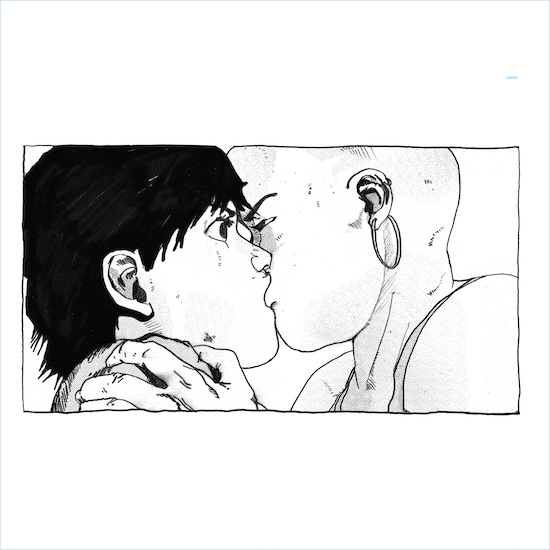Garbled voices, chirping crickets, crunching footsteps and the neutral tones of news announcers emerge from a haze of portentous electronica on ‘Romance Dawn for the Cyber World’, serving as a gateway into the universe Nathan Micay creates for Blue Spring. The newsreaders’ accounts of inter-community strife and rave busts set scenes of angst and tension even as a crystalline synth melody carves out a future universe of clean lines and smooth technology.
It’s a classic dystopian dichotomy, drawing in this case from the celebrated Japanese manga Akira, the concept extending to the artwork that adorns the album and the accompanying comic strip. Blue Spring is, for want of a better term, a concept album set in a dazzling future, and Micay’s strength as a composer and producer comes from how he keeps this narrative flowing throughout its eleven tracks.
Electronic music is in many ways uniquely placed to allow such flights of storytelling fancy. From the prog heyday to new artists like Kuedo and Logos, synths automatically set the listener’s mind’s eye forwards. Arguably films like Blade Runner work so well in part because their synthetic soundtracks convey as much of the future as the images. As such, and perhaps ironically, Blue Spring works as a narrative piece whether you have the comic to hand or not.
The story follows the adventures of a young rebel caught up in a battle against a vicious police state and this is echoed in the soaring synth melodies that evoke towering skyscrapers or the mechanic beat patterns on tracks like ‘Ecstasy is on Maple Mountain’ that hint at potential danger. From the cyberpunk of Akira and Battle Angel Alita to the sweeping vistas of novelists like Arthur C. Clarke and Phillip K. Dick, it’s all here.
But Blue Spring, imbued by Micay’s nostalgic view of rave culture, also works on a purely musical level. ‘He has the Key’ may carry an oblique message relating to a story delivered by a female voice on a loop; but it also works as a bouncy, if slightly sinister, pop tune, all shimmering effects and sexy snares. The title track features a classic synthesizer build up and attack runs of snares and cymbals, a mounting crescendo that never fully breaks into techno flamboyance but is all the more captivating for it. ‘The Party We Could Have’, meanwhile, is a hypnotic trance banger with infectious looped beats and minimal synth grooves.
In many ways the album is a throwback to nineties icons like The Future Sound of London and even, in places, Leftfield. But there are also textures that bring to mind Tangerine Dream or Ash Ra and minimal pieces that could have been found on Kuedo’s Severance. All of this boils together into a uniquely entrancing whole that never stops showcasing Micay’s skills for melody and tone.
Blue Spring is one of those rare albums that sets out to create a whole world for the listener and actually succeeds in doing so. As familiar as much of it is, it’s also a breath of fresh air, an electronic album delivered by a film score composer’s imagination.


